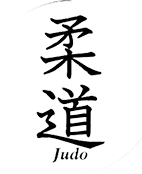Can someone explain Sen No Sen and Sen Sen No Sen and how to develop their use?
4 posters
Sen No Sen & Sen Sen No Sen

Emanuele2- Posts : 202
Join date : 2013-01-21
- Post n°2
 Re: Sen No Sen & Sen Sen No Sen
Re: Sen No Sen & Sen Sen No Sen
Sen no sen is when you attack when your opponent is in going to attack you. For example: uke is trying to perform a de ashi barai, you realize it and immedately counter him with another de ashi barai.
Sen sen no sen is when you attack first anticipanting your opponent; when you quickly do the first move before your opponent is able to begin to attack you.
Sen sen no sen is when you attack first anticipanting your opponent; when you quickly do the first move before your opponent is able to begin to attack you.

gester- Posts : 66
Join date : 2013-02-07
- Post n°3
 Re: Sen No Sen & Sen Sen No Sen
Re: Sen No Sen & Sen Sen No Sen
Thanks for the reply.
I'll add Go-No-Sen to the mix to show progression from one level to another.
Loosely defined:
I see Go-No-Sen as countering a particular technique.
Sen-No-Sen is more responding to an attack before its fully formed in its execution. ie You see it coming without knowing necessarily knowing what the exact technique will be.
Sen-Sen-No-Sen is knowing something is about to happen and attacking before the opponent even starts the attack progression.
Am I right?
My next question is how to learn to use Sen-No-Sen and particularity Sen-Sen-No-Sen.
Sen-Sen-No-Sen seems to be the "Magical" level of development.
I'll add Go-No-Sen to the mix to show progression from one level to another.
Loosely defined:
I see Go-No-Sen as countering a particular technique.
Sen-No-Sen is more responding to an attack before its fully formed in its execution. ie You see it coming without knowing necessarily knowing what the exact technique will be.
Sen-Sen-No-Sen is knowing something is about to happen and attacking before the opponent even starts the attack progression.
Am I right?
My next question is how to learn to use Sen-No-Sen and particularity Sen-Sen-No-Sen.
Sen-Sen-No-Sen seems to be the "Magical" level of development.
finarashi likes this post

Emanuele2- Posts : 202
Join date : 2013-01-21
- Post n°4
 Re: Sen No Sen & Sen Sen No Sen
Re: Sen No Sen & Sen Sen No Sen
Yes, you're right. Only time and experience can allow you to use those principles.
Let's image there is a plantpot leaning on a door, the door is ajar, if you open the door, the plantpot will fall on you.
You open the door, the plantpot falls and you grab it before it hits you or the floor. This is go no sen.
You open the door, the plantpot starts to fall, and you hit it with your fist, with a stick ecc. This is sen no sen.
You are in going to open the door, but you realize there is a plantpot on the door, so you grab the plantpot and put it away, without opening the door or making fall the plantpot. This is sen sen no sen.
Let's image there is a plantpot leaning on a door, the door is ajar, if you open the door, the plantpot will fall on you.
You open the door, the plantpot falls and you grab it before it hits you or the floor. This is go no sen.
You open the door, the plantpot starts to fall, and you hit it with your fist, with a stick ecc. This is sen no sen.
You are in going to open the door, but you realize there is a plantpot on the door, so you grab the plantpot and put it away, without opening the door or making fall the plantpot. This is sen sen no sen.
Last edited by Emanuele2 on Fri Dec 10, 2021 8:05 pm; edited 1 time in total

NittyRanks- Posts : 109
Join date : 2013-05-10
Age : 56
Location : New York State
- Post n°5
 Re: Sen No Sen & Sen Sen No Sen
Re: Sen No Sen & Sen Sen No Sen
It's a cool concept and a little difficult to get used to.

noboru- Posts : 839
Join date : 2013-08-26
Age : 46
Location : Czech Republic
Developing Sen sen no sen or Sen no sen .
My experience is using Handonokuzushi / Hannonokuzushi(Unbalancing by reaction). When opponent try to react do your unbalancing move do your waza first. You have to do some type of pressure to opponent, when he want to do any reaction you have to be first in waza. It is very hard in judo. The opponent is very close. The hands could be after pressure relaxed, than you can feel by hand starting opponents reaction. And this is time for your waza. His attack not started , started only his reaction to your pressure/unbalancing action.
Handonokuzushi / Hannonokuzushi( could be key for this. The books fro Daigo sensei about Kodokan Judo Throwing Techniques ( https://www.amazon.com/Kodokan-Throwing-Techniques-Toshiro-Daigo/dp/1568365772 ) is full of examples how it is done for each technique.
Some orher example:
Nice video from Tadahiro Nomura (3 time olympic champion - 1996,2000, 2004)
Notes from FCB Embassy Judo Club 大使館柔道道場
Some things to note:
• tori pulls uke down, then up and forward as uke resists = hannô
kuzushi ('reaction kuzushi' = using uke's response to being moved to manipulate him)
• tori's heels never get too close to uke's toes, not to far, an appropriate ma'ai (interval)
• both hands work together in the same direction to induce kuzushi
https://www.facebook.com/christophe.serra.142/videos/10156872713326873/
-----------------------
For gonosen is good practice Gonosennokata https://judo.forumotion.com/f49-gonosen-no-kata
My experience is using Handonokuzushi / Hannonokuzushi(Unbalancing by reaction). When opponent try to react do your unbalancing move do your waza first. You have to do some type of pressure to opponent, when he want to do any reaction you have to be first in waza. It is very hard in judo. The opponent is very close. The hands could be after pressure relaxed, than you can feel by hand starting opponents reaction. And this is time for your waza. His attack not started , started only his reaction to your pressure/unbalancing action.
Handonokuzushi / Hannonokuzushi( could be key for this. The books fro Daigo sensei about Kodokan Judo Throwing Techniques ( https://www.amazon.com/Kodokan-Throwing-Techniques-Toshiro-Daigo/dp/1568365772 ) is full of examples how it is done for each technique.
Some orher example:
Nice video from Tadahiro Nomura (3 time olympic champion - 1996,2000, 2004)
Notes from FCB Embassy Judo Club 大使館柔道道場
Some things to note:
• tori pulls uke down, then up and forward as uke resists = hannô
kuzushi ('reaction kuzushi' = using uke's response to being moved to manipulate him)
• tori's heels never get too close to uke's toes, not to far, an appropriate ma'ai (interval)
• both hands work together in the same direction to induce kuzushi
https://www.facebook.com/christophe.serra.142/videos/10156872713326873/
-----------------------
For gonosen is good practice Gonosennokata https://judo.forumotion.com/f49-gonosen-no-kata

Emanuele2- Posts : 202
Join date : 2013-01-21
- Post n°7
 Re: Sen No Sen & Sen Sen No Sen
Re: Sen No Sen & Sen Sen No Sen
Gester, sorry for my delay, I've just answered to your pvt message.
|
|
|

